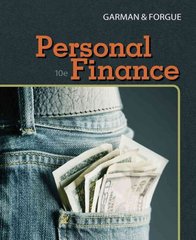
Row 29:
| | | | Growth Stage | |
| | | | Stage 1 - Near-term Growth | |
| | | | 2020E | 2021E | 2022E | |
| | Revenue Growth | 20.0% | 25.0% | 23.5% | |
| | Gross Margin | 81.9% | 81.9% | 81.9% | |
| | R&D Percent | 19.0% | 18.8% | 18.8% | |
| | SG&A Percent | 27.5% | 27.0% | 26.7% | |
| | Tax Rate | | 15.0% | 19.0% | 20.0% | |
| | | | | | | |
| What is your forecast for each year? | | | | |
| | | | 2020E | 2021E | 2022E | |
| | EBITDA ($MM) | 40,023 | 50,096 | 61,876 | |
| | GAAP EPS* | | 9.06 | 10.93 | 13.35 | |
| | *Full Diluted Earnings Per Share (EPS) row 58 in SFAM | | |
J60 fa A B D E F G H K L 43 44 2) Update the Balance Sheet forecasts for Facebook (FB) in SFAM for the near-term stage of growth (Phase 1). 45 We want to look at and adjust our forecasts for increases in Non-cash Net Trade Working Capital and Capital Expenditures. 46 These are the bases of the Investments that are integral to the Discounted Cash Flow model. 47 SFAM defaults the forecasts to be equal to the last actual year (2019 in this example) and we must evaluate whether the default forecasts 'make sense 48 49 2020E 2021E 2022E Hint: Location on the Balance Sheet 50 Accounts Receivable Days 44.2 44.2 44.2 Row 92 - Leave these unchanged from the default 51 Accounts Payable Days 23.5 23.5 23.5 Row 94 - Update as specified 52 Other Current Assets 53 Percent of Revenues 2.6% 2.6% 2.6% Row 170 - Leave these unchanged from the default 54 Other Current Liabilities 55 Percent of Revenues 20.0% 20.0% 20.0% Row 173 - Update as specified 56 Investments in PP&E 57 Percent of Revenues 21.0% 20.0% 17.0% Row 203 - Update as specified 58 59 60 Why did we adjust the Accounts Payable to 23.5 days for our forecast? 61 a) the history is in the low 20s 62 b) the company provided guidance that collections would improve taking the Days Payable Outstanding to the low 20s 63 c) there is evidence that 2019's jump in payables is an outlier and not a permanent shift in the company's business model (change in custom 64 d) all of the above 65 66 67 Look at the Discounted Cash Flow Sheet in the SFAM Model. 68 What is your forecast for Unlevered Free Cash Flow? (Find this in Row 29.) 69 70 2020E 2021E 2022E 71 Unlevered Free Cash Flow 19,779 72 73 Why do financial analysts forecast 'Unlevered Free Cash Flow' to perform the Discounted Cash Flow? 74 (a) Unlevered Free Cash Flow best represents the cash generating ability of a business. 75 (b) This is the most common approach of Wall Street financial analysts and looks at future cash flows before the costs of borrowing. 76 (c) When the analyst forecasts Free Cash Flows to Equity, considering leverage, the analyst must discount these cash flows by the Weighted 77 (d) a and b 78 (e) b and c 79 (f) all of the above 80 01 J60 fa A B D E F G H K L 43 44 2) Update the Balance Sheet forecasts for Facebook (FB) in SFAM for the near-term stage of growth (Phase 1). 45 We want to look at and adjust our forecasts for increases in Non-cash Net Trade Working Capital and Capital Expenditures. 46 These are the bases of the Investments that are integral to the Discounted Cash Flow model. 47 SFAM defaults the forecasts to be equal to the last actual year (2019 in this example) and we must evaluate whether the default forecasts 'make sense 48 49 2020E 2021E 2022E Hint: Location on the Balance Sheet 50 Accounts Receivable Days 44.2 44.2 44.2 Row 92 - Leave these unchanged from the default 51 Accounts Payable Days 23.5 23.5 23.5 Row 94 - Update as specified 52 Other Current Assets 53 Percent of Revenues 2.6% 2.6% 2.6% Row 170 - Leave these unchanged from the default 54 Other Current Liabilities 55 Percent of Revenues 20.0% 20.0% 20.0% Row 173 - Update as specified 56 Investments in PP&E 57 Percent of Revenues 21.0% 20.0% 17.0% Row 203 - Update as specified 58 59 60 Why did we adjust the Accounts Payable to 23.5 days for our forecast? 61 a) the history is in the low 20s 62 b) the company provided guidance that collections would improve taking the Days Payable Outstanding to the low 20s 63 c) there is evidence that 2019's jump in payables is an outlier and not a permanent shift in the company's business model (change in custom 64 d) all of the above 65 66 67 Look at the Discounted Cash Flow Sheet in the SFAM Model. 68 What is your forecast for Unlevered Free Cash Flow? (Find this in Row 29.) 69 70 2020E 2021E 2022E 71 Unlevered Free Cash Flow 19,779 72 73 Why do financial analysts forecast 'Unlevered Free Cash Flow' to perform the Discounted Cash Flow? 74 (a) Unlevered Free Cash Flow best represents the cash generating ability of a business. 75 (b) This is the most common approach of Wall Street financial analysts and looks at future cash flows before the costs of borrowing. 76 (c) When the analyst forecasts Free Cash Flows to Equity, considering leverage, the analyst must discount these cash flows by the Weighted 77 (d) a and b 78 (e) b and c 79 (f) all of the above 80 01







